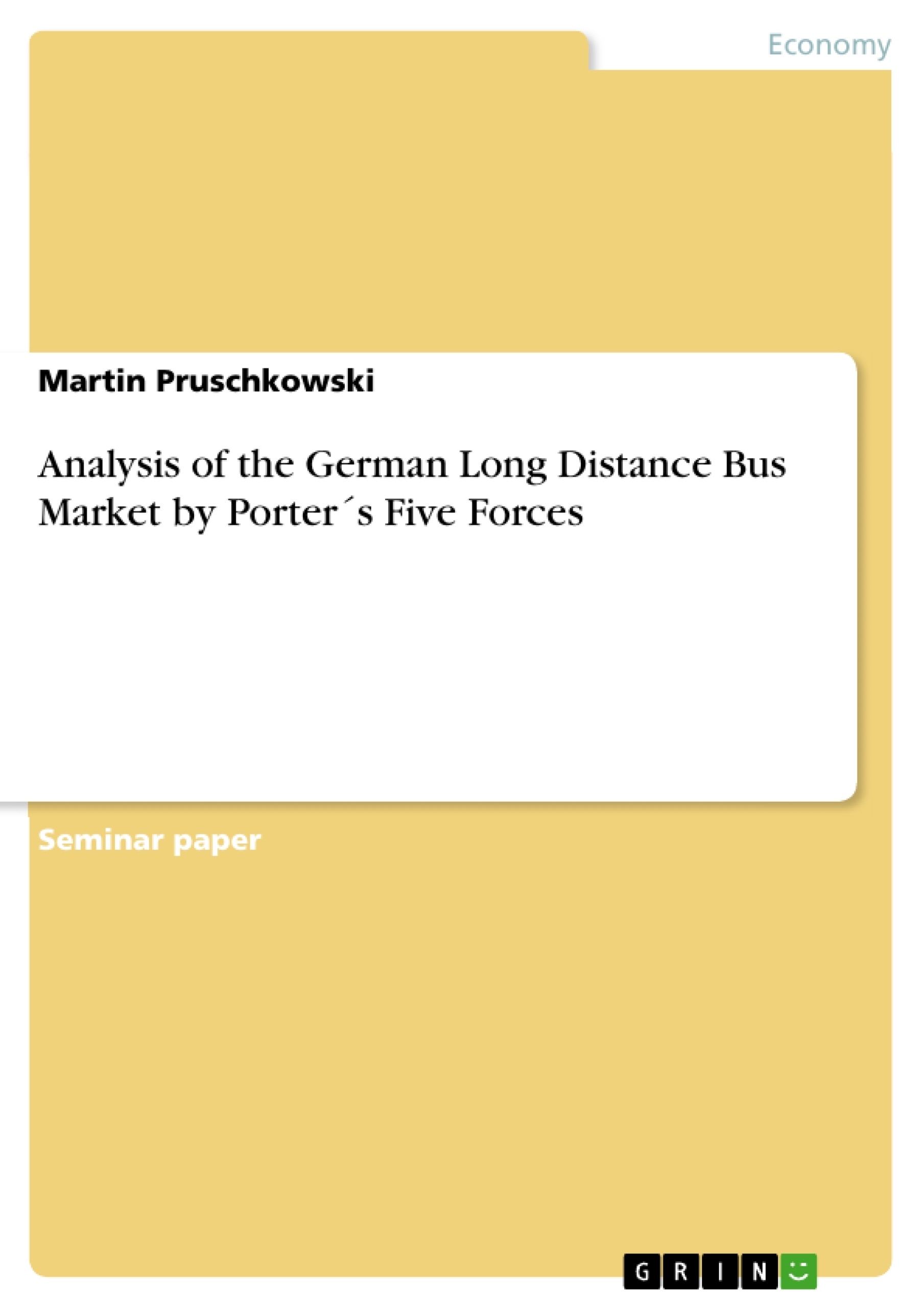This work is divided into different parts. The first part shows the theoretical background and introduces the concept of Porter’s five forces. Therefore the section starts with the objective and field of application of the model followed by the description of the five individual forces. In the section of the business case the concept is applied to the German long distance bus market in order to get a comprehensive picture of the industry situation, risks and opportunities. The last section will complete the entire work by doing a summary, limiting the research and will giving recommendation for further research.
Table of Contents
List of Abbreviations
List of Figures
1 Introduction
1.1 Problem definition
1.2 Objective
1.3 Structure and methodology
2 Market analysis by Porter’s five forces
2.1 Objective and field of application
2.2 Description
2.2.1 Threat of new entrants
2.2.2 Level of rivalry among existing competitors
2.2.3 Threat of substitutes
2.2.4 Bargaining power of suppliers
2.2.5 Bargaining power of customers
3 Business case: German long distance bus market
3.1 Procedure
3.2 Results
3.2.1 Threat of new entrants
3.2.2 Level of rivalry among existing competitors
3.2.3 Threat of Substitutes
3.2.4 Bargaining power of suppliers
3.2.5 Bargaining power of customers
4 Conclusion
4.1 Summary
4.2 Further Research
4.3 Limitation of the research
Appendix
References
- Quote paper
- Master of Business Administration (MBA) Martin Pruschkowski (Author), 2015, Analysis of the German Long Distance Bus Market by Porter´s Five Forces, Munich, GRIN Verlag, https://www.grin.com/document/432962
-

-

-

-
Upload your own papers! Earn money and win an iPhone X. -

-
Upload your own papers! Earn money and win an iPhone X. -

-
Upload your own papers! Earn money and win an iPhone X. -

-
Upload your own papers! Earn money and win an iPhone X. -

-
Upload your own papers! Earn money and win an iPhone X. -

-
Upload your own papers! Earn money and win an iPhone X. -

-
Upload your own papers! Earn money and win an iPhone X.

